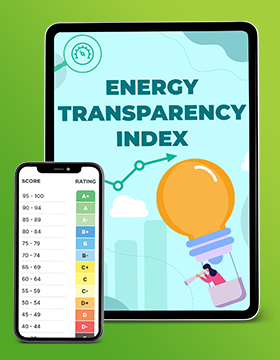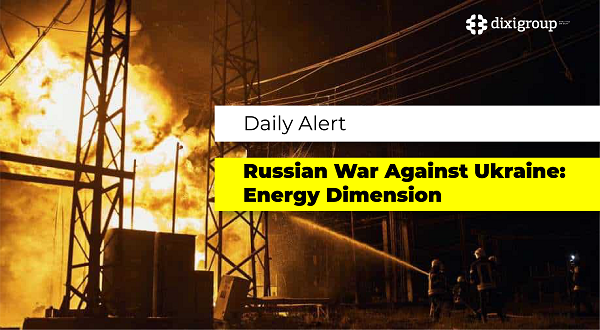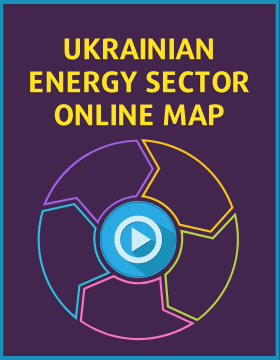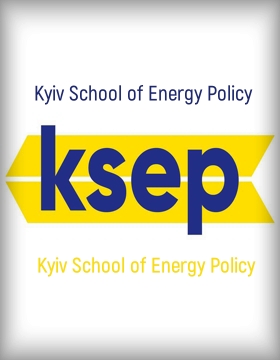European LNG Shield: How Ukraine Strengthens Energy Security Through Partne
European gas for Ukraine: imports through five countries

Ukraine will begin receiving American gas via a new route.
Five countries have officially opened a joint corridor for gas supplies from the Greek LNG terminal Revitus. Gas will flow from Greece to Ukraine via Bulgaria, Romania and Moldova. The throughput capacity for the first year is up to 1 billion cubic meters, as reported by the Ukrainian Gas Transmission System Operator LLC on June 20.
What are the further prospects for the import of liquefied natural gas for Ukraine, Ukrainian Energy learned.
European Experience
Recently, Ukraine has been actively choosing a model for importing liquefied natural gas (LNG), based on the experience of Estonia, Poland and Lithuania - countries that have successfully implemented similar energy strategies. Modern land and floating regasification terminals (FSRU) have been built in these states, which has significantly reduced dependence on traditional gas pipeline connections with Russia. Thanks to the fact that Estonia, Poland and Lithuania invested in LNG infrastructure, they ensured the flexibility of gas supplies from different regions: the USA, Qatar, Norway. In Poland, for example, the terminal in Świnoujście was modernized and a project with an FSRU in Gdansk was launched, which allowed diversifying supplies not only to itself, but also to its neighbors - in particular to Ukraine.
Although Ukraine does not have its own LNG terminal, steps are being taken to integrate into the European LNG network. Thanks to the launch of the GIPL interconnector, Ukraine gained access to the Lithuanian and Polish terminals in Klaipeda and Świnoujście, which opened the possibility of importing gas this summer. In addition, the signed memoranda with the Polish ORLEN and DTEK provide for the delivery of the first batches of American LNG to Poland, regasification in the Baltics and transfer to Ukraine via interconnectors, Reuters reports.
In November 2024, agreements were signed in the Odessa region with the US company Excelerate Energy and the Spanish Gas Natural for the construction of a floating floating shore terminal (FSRU) in the port of Pivdennyi, with a possible launch as early as 2026. This will allow Ukraine to receive LNG directly by sea, eliminating its exclusive dependence on external interconnectors. This was reported by the press service of the GTS Operator.
Ukraine is also known for its huge underground gas storage facilities - the largest in Europe and one of the largest in the world. This allows not only to store imported gas, but also to provide regasified LNG to other countries in the region. Together with GIPL and other interconnectors, Ukraine's transport network is ready to process at least 1.5–1.8 billion cubic meters of gas per year, with the prospect of increasing to 22 billion cubic meters.
However, plans to create its own offshore FSRU in the port of Yuzhny are fraught with some risks. The cancellation of tenders for land-based infrastructure accelerates the introduction of a floating solution, but points to problems with long-term planning. According to Global Energy Monitor, the previous land-based LNG terminal project in Odessa was stopped back in 2017 - it is still considered “suspended”.
Today, Ukraine imports LNG through Poland, Lithuania, Germany and Greece, and plans a significant increase in volumes - to about 4 billion cubic meters in 2025, which will cost about $ 1 billion. These volumes are important not only from the point of view of ensuring winter - the LNG model will be the key to long-term energy independence, Reuters reports.
Geopolitically, the LNG model strengthens the positions of Ukraine and Europe, allowing to reduce the role of Russia as a gas monopolist. Cooperation with American, Polish, and Lithuanian partners in Eastern Europe, as well as the development of its own terminal, significantly increases the resilience of both the Ukrainian and regional energy systems. At the same time, from a technical perspective, the next challenge is to scale up regasification capacities, modernize pipelines, develop understandable tariffs and a regulatory environment that will allow for the effective integration of the Ukrainian LNG module into the European market.
Ukraine has already embarked on the path of creating a diversified LNG ecosystem. Providing terminals, access to interconnectors, storage capacities, and thoughtful agreements with foreign partners is a comprehensive plan that can not only strengthen Ukraine’s energy security, but also make it a key LNG hub in Eastern Europe.
Keeping up the pace
Artem Petrenko, Executive Director of the Association of Gas Producers, claims that since mid-April, Ukraine has been actively filling its UGS and preparing for the new heating season. In May, more than 1 billion cubic meters were sent underground - this is its own production plus imports.
"Europe needs to pump 57 billion cubic meters into storage for the winter, as shown by the summer forecast of ENTSOG. Demand for LNG remains key, its supplies are already breaking records. In May, the average daily shipment from European terminals increased to 442 million cubic meters. If we compare it with May 2024, then the increase is 50%," Petrenko explained.
According to him, in early 2025, large-scale Russian missile attacks on gas production infrastructure significantly reduced production in Ukraine. This created risks for the completion of the heating season and forced emergency gas imports. The country is now gradually pumping resources into underground storage facilities (UGF) for the coming winter, although it faces a number of challenges.
Back in the winter, after the attacks, 800 million cubic meters of gas were urgently purchased for balancing. They were saved — along with an additional 700 million cubic meters. m. In addition, funding from partners — €410 million — is being added, which will allow the purchase of almost a billion more cubic meters. Cooperation with international donors, in particular with the Norwegian government, continues.
Despite the losses, domestic production is gradually recovering. Ukrgazvydobuvannya has already commissioned 24 new wells, and drilling volumes have increased by 38% compared to last year. In addition, since April, Ukrnafta has been supplying gas at state prices, which allows for more efficient filling of storage facilities.
Gas imports from Europe for 2025 have already reached 1.9 billion cubic meters. The main routes: Slovakia, Hungary, Poland, Romania, Moldova. The Trans-Balkan route through Greece has also been opened since June, although its tariff — €7.8 per megawatt-hour — remains higher than the average in Europe due to transit fees in several countries.
In May, Ukraine pumped more than 1 billion cubic meters of gas into underground storage facilities. In the summer, this rate should increase — to 700–900 million cubic meters per month — in order to form a reserve of 13.5–14 billion cubic meters by winter.
In the domestic market, a rapid increase in gas prices for industry was recorded in May. If in April the price was within 15.5–15.9 thousand UAH/thousand cubic meters (excluding VAT), then in May the quotes for June increased by almost a third - over 20 thousand UAH. The reasons are increased demand from traders, expectations of a deficit and an increase in prices at the European hub TTF.
Further price dynamics will depend on gas prices in the EU, the balance of domestic demand and supply, as well as on risks to infrastructure due to the war.
Any escalation can affect the market instantly, causing a surge in prices due to fears of a deficit.
According to Artem Petrenko, global production of liquefied natural gas (LNG) is growing, and this year - according to the International Energy Agency - will increase by 27 billion cubic meters (+5%). The main buyers are Europe and Asia.
In the EU, LNG currently covers almost 46% of imports. The main suppliers are the USA and Qatar. According to GIE, in May 2025, the average daily LNG shipment to Europe reached 442 million cubic meters - this is 50% more than last year.
Ukraine, in turn, needs up to 6 billion cubic meters of imports to get through the winter. Some of it has already been purchased, the rest will have to be purchased in competition with other countries in the region. The situation will be especially tense if Europe experiences disruptions or demand increases in Asia (for example, due to heat).
European storage facilities are only half full (as of June 9 - 51.8%), which is significantly lower than last year's level (71.9%). That is, even record LNG imports do not guarantee full coverage of demand.
In this context, Ukraine should maintain the pace of production, import under favorable conditions and prepare for any force majeure.
The United States is in the lead
In March 2025, the United States set a new record for exports of liquefied natural gas (LNG), sending 458 billion cubic feet — or 13.74 billion cubic meters. This is 11.9% more than in February and 23.8% more than in the same period in 2024. As noted by the former head of the GTS Operator of Ukraine, Serhiy Makogon, citing data from the US Department of Energy, this volume became the highest in the history of American LNG exports.
During March, 135 tankers with liquefied gas were shipped, and about 80% of this volume went to Europe. In the first quarter of this year alone, the United States exported about 29 billion cubic meters to Europe. m of LNG, which is 39% more than in the same period in 2024. The total volume of American LNG exports in the first three months of 2025 amounted to 36.3 billion cubic meters - an increase of 14% compared to last year.
The main increase was provided by new or expanded projects, in particular: Plaquemines LNG in Louisiana (+56%), Altamira LNG in Mexico (+103%), Sabine Pass (+17%) and Calcasieu Pass (+26%). As Serhiy Makogon emphasizes, these figures indicate the strengthening of Europe's energy independence from Russian gas.
For Ukraine, according to Makogon, such dynamics open up important opportunities. The growth of American LNG exports can become a key element of energy security for the European continent, including for Ukraine. It is worth considering direct cooperation with American exporters, which will avoid excessive dependence on intermediaries and reduce the cost of the resource.
Russia is betting on Arctic LNG 2
Meanwhile, the Russian Federation is trying to resume exports of liquefied natural gas (LNG) from the Arctic LNG 2 terminal, which has been virtually halted for eight months due to Western sanctions, primarily from the United States. Moscow is actively looking for new buyers who would be willing to buy Russian LNG despite the restrictions, and at the same time is expanding its so-called "shadow fleet", capable of transporting fuel without official ties to sanctions structures. This is reported by Bloomberg.
According to an analysis of vessel traffic data and satellite images collected by Bloomberg journalists, a specialized vessel for transporting liquefied gas recently docked at Arctic LNG 2 for the first time since October 2024. This may indicate an attempt to resume export activities despite the current embargo.
After the start of Russia's full-scale invasion of Ukraine in 2022, Russian gas supplies to the EU have sharply decreased. Instead, the Kremlin has placed its bets on LNG, whose seaborne deliveries have brought new profits, especially amid rising prices. That is why Arctic LNG 2, which is part of Russia’s gas ambitions in the Arctic region, is of strategic importance to Moscow.
Bloomberg reports that at least 13 vessels are currently serving the Arctic LNG 2 project, some of which are equipped to navigate the icy waters of the Arctic. Some of these vessels have changed formal operators or owners several times, presumably to avoid sanctions control. Among them:
According to Malte Gumpert, founder of the Arctic Institute in Washington, Russia now has more vessels at its disposal than it will have in the summer or fall of 2024. “This small fleet will be enough to export LNG if there is anyone to buy it,” the expert noted.
Bloomberg reports that in August-October 2024, Russia has already shipped eight LNG shipments from this terminal, but none of them were delivered directly to foreign ports - the gas was simply transshipped to domestic storage facilities. In October of the same year, the facility suspended production due to ice cover, which made the approach to the terminal impossible for conventional vessels.
Sanctions against Arctic LNG 2 were introduced in September 2024 by the Joe Biden administration. The restrictions applied to companies and vessels involved in the export of LNG from this project. However, it is currently unclear whether the Donald Trump administration, which has returned to power, will adhere to the same tough line or allow the sanctions mechanisms to be diluted. The impact of this factor significantly affects the willingness of countries or companies to buy Russian LNG.
Traders familiar with the situation say that Russian representatives of the Arctic LNG 2 project have been trying to conclude gas supply agreements with potential buyers in India and China for the past year. However, as Bloomberg notes, it is currently unknown whether they have managed to secure real contracts.
Olena Marchenko, specially for Ukrainian Energy








